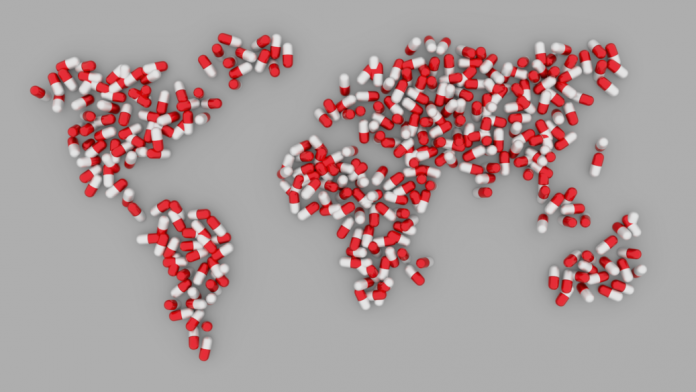This article is written by Vaasawa Sharma.
Table of Contents
Abstract
The Indian Patent Act, 1970 came into force in 1972 consolidating the existing laws related to patents. India has always struggled to get patents in Pharmaceutical Industry. Before the advent of TRIPS agreement, the product patents were not been given a desired recognition but after the amendment in 2005, the product patents as well as process patents were being considered within the bracket of “patentable subject matter”. The pharmaceutical sector is taking a lead day-by-day resulting in the repletion and duplication of drugs and medicines. To prohibit this practice, the patents act does not accept the drug patents that include an “evergreening” of any medicine or drug already in the market. The invention to get patented, it needs to be novel, non-obvious and should be capable of industrial application, only by qualifying these perquisites; the invention can be accepted and granted a patent.
Introduction
The Indian Patents Act, 1970 was established on 20th April, 1972. This act has replaced the Indian Patents and Designs Act, 1911. The Ayyangar Committee Report headed by Justice N. Rajagopala Ayyangar recommended the establishment of the said act. There were many major changes that were recommended. One of the major changes was the introduction of process patents with regard to medicines, drugs etc. In earlier times, the patents were not granted to drugs and medicines but with the advent of Trade related aspects of Intellectual Property (TRIPS) Agreement, certain major amendments took place in the Patent Act, 1970.
But section 3(d) is considered as the most criticized part of this act. Moreover, this section is the tyranny for many pharmaceutical industries. Many of the drug patents are rejected on the ground that it lacks novelty or it does not result in enhanced efficacy. This is one of the major hurdles that the pharmaceutical industries are facing. The said act describes the inventions not patentable, patent grants, rights of patentee, provisions for compulsory licensing and many more details that a patent owner needs to know. It also mentions the conditions that a person needs to know before filing the patent in any field and these are Novelty, Utility and Non-obviousness (NUN test). That is to say that the invention needs to be the novel idea that lacks obviousness and it should be capable of industrial application also. The invention should be useful to the general public.
The invention needs to pass the desired test only then such invention can be patented. Most importantly, such invention must be capable of industrial application and if the patent is of medicine or drug then such drug should be available to the general public at reasonable and affordable price. Patent act, 1970 also restrict the monopoly rights of the patent owner over the patented drug or medicine. This act also is in consonance with the competition law in India as it takes care of the market competition between the various industries. The Indian patents act protects the rights of patent owner who claims to be the first and true inventor of the invention. But also restricts the misuse of such right. For this, the provision of Compulsory License is also established under the said act. Under this section, the license of patent can also be given to the other person by the government if the requirements have not been fulfilled by the patent owner.
There are numerous historical judgments that deal with the patents in pharmaceutical sector and the complications they face in the grant of patents.
The article deals with the case law “Novartis AG. V. Union of India” is one of the landmark judgments in the Indian Patent regime. This was the long run battle fought by Novartis for the grant of patent for the invention of a drug that he discovered for the treatment of leukemia.
Section 3(D) of Patents Act 1970
Section 3 of the Patents Act 1970 says about the inventions which are not patentable. Under section 3(d) of the act says that the mere discovery of a new form of a known substance which does not result in the enhancement of the known efficacy of that substance or the mere discovery of any new property or new use for a known substance or of the mere use of a known process, machine or apparatus unless such known process results in a new product or employs at least one new reactant. Explanation -For the purposes of this clause, salts, esters, ethers, polymorphs, metabolites, pure form, particle size, isomers, mixtures of isomers, complexes, combinations and other derivatives of known substance shall be considered to be the same substance, unless they differ significantly in properties with regard to efficacy.
This section enumerates that the discovery of a new form of an already existing substance, fails the test of novelty. The enhancement of efficacy is an essential condition for the invention to get patented. Moreover, the invention also needs to be totally new. If there is only the change in molecular formula of the substance used in the drug, then the invention is not patentable because it is not new and novel. The product in question needs to be undoubtedly new. Merely to change the molecular formula doesn’t satisfy the test of novelty and hence such inventions cannot be patented. The invention must adhere to all the requirements laid down by the patent law. The ever greening is strictly restricted under the said act to avoid the misuse of rights of the patent owner.
NOVARTIS AG v. UNION OF INDIA
Facts of the case
Novartis v. U.O.I. is one of the landmark cases in Intellectual Property Law. The case brought into the question, the interpretation of section 3(d) of Indian Patent Act, 1970. The battle started in the year 1980 by the International Pharmaceutical Company, Novartis International AG which invented a drug named “Gleevic” which was an anti-cancer drug. It was used for the treatment of Chronic Myeloid Leukemia (CML) and Gastrointestinal Stromal Tumours (GIST) but the major thing was it was a beta crystalline form of Imatinib mesylate.
Before the advent of TRIPS agreement, the product patents were not patentable, only it was confined to process patents. But after the amendment in 2005, section 5 of the Indian Patent Act, 1970 was repealed and the product patents were also included in patentable subject matter.
The patent application filed by Novartis was rejected by Madras Parent Office on the ground of anticipation by previous publication. Also it was said that it lacks the requirement of novelty and non-obviousness therefore, it is not capable of patented.
After that, Novartis filed two writ petitions in 2006 in Madras High Court under Article 226 of the Constitution of India. it was being also contended that section 3(d) of Patent Act, 1970 was held unconstitutional on the ground that it is not in consonance with the TRIPS agreement. Then the case was transferred to IPAB (Intellectual Property Appellant Tribunal) in 2007 which was dismissed by IPAB also stating the same ground for the rejection i.e. it lacks novelty. It was further held that the ever greening of the patent is not permitted; introducing the minor modifications in the generic drugs is not novelty and hence cannot be patented. After that Novartis filed Special Leave Petition in the Supreme Court in 2009 against the order of IPAB.
Finally in the year 2013, this battle came to an end. The Supreme Court rejected the appeal filed by Novartis. It was held by the court that the beta crystalline form of Imatinib Mesylate is only a new and modification of the substance Imatinib Mesylate. It was further elaborated by the court that “Efficacy” in section-3(d) only means “Therapeutic Efficacy” and the properties which are directly related with the drug is its therapeutic efficacy. After comparing both the forms of the said drug, the court held that the properties of the drug in question do not contribute to the increased therapeutic efficacy.
Ratio decidendi of the case
It was being very rightly said that the ever greening of the patents is not permitted. Moreover, the court protects the rights if common man and restricts the pharmaceutical companies to sell the medicines at very high price which is unreasonable for the common man. Section 3(d) of the Patent Act prevents the companies to sell identical drugs with just changing the molecular structure of the substance. Also, Imatinib Mesylate lacks “inventive step” in it. Therefore, it prohibits the ever greening of the patents.
The evergreening of patented drugs is restricted because once the drug gets patent license, no one has a right to manufacture such drug again. The exclusive license of such drug is owned by the patent owner only. This provision is made to ensure the originality of patents. The owner of the patent has an exclusive right to use his invention. This right cannot be misused or abused by any other person. The provision of compulsory license is formulated to ensure the prohibition of evergreening.
Patents act ensures the full-fledged and exclusive right to the patent owner. The rights of patentee are described under section 48 of the said act. These are the privileges which available to patent owner. These are available to product patent as well as process patent. The patent law is very good legislation which ensures the patentability and exclusivity of patents.
To know more about Patents please visit:
Conclusion
Patent is one of the intangible forms of property under Intellectual Property. The grant of patents must follow the tests of novelty, non-obviousness and utility, only then the patent can be granted to the true and first inventor of the patent. The inventions need to be incredibly new and novel. Moreover, the invention needs to be capable of being industrial application and it must be useful to the general public at reasonable and affordable price. To accomplish the purpose of the said act, the provision of compulsory license is established so as to curb the monopoly of the patent owner. Patents are only granted to the person who has invented the thing for the purposeful use of the general. The newness and novelty also needs to be included in the invention to get patented. The various case laws have been decided by the court so as to meet the criteria of the invention to get patented. This statutory act is conclusive and includes each and every aspect of invention needs to get patented.
The Patents Act, 1970 bars the ever greening of the patent inventions. This is one of the major features of this act. Also prohibits certain inventions under section 3 of the said act. The medicines and drugs are granted patents very rarely in India. The invention should contain an inventive step also. If all these requisites are accomplished only then the patent can be granted under Indian Patents Act, 1970. The legislation is very beneficial to the patent owners as it ensures that their rights are safeguarded by the said act. But the scope of granting patents to pharmaceutical sector needs to be enlarged. Large numbers of patent applications are filed but only few of them gets the patent grant. This is not good for the development of country. The patents act needs more amendments and wider perspectives should be adopted so that more and more industries can get the patents. Every legislation or statute has some loopholes but the only need is to cur those loopholes and a proper strengthened framework should be established.
Undoubtedly, we can say that patents act is one of the most complicated legislation under Intellectual Property Rights. It ensures certain rights of the patent owner but the process for the grant of patents is also very difficult especially, when we talk about the pharmaceutical sector that is drugs and medicines. The patent should be granted to wide variety of drugs so that the medical science sector can be developed and more drugs will be made available to the poor people.
LawSikho has created a telegram group for exchanging legal knowledge, referrals and various opportunities. You can click on this link and join:
 Serato DJ Crack 2025Serato DJ PRO Crack
Serato DJ Crack 2025Serato DJ PRO Crack











 Allow notifications
Allow notifications



